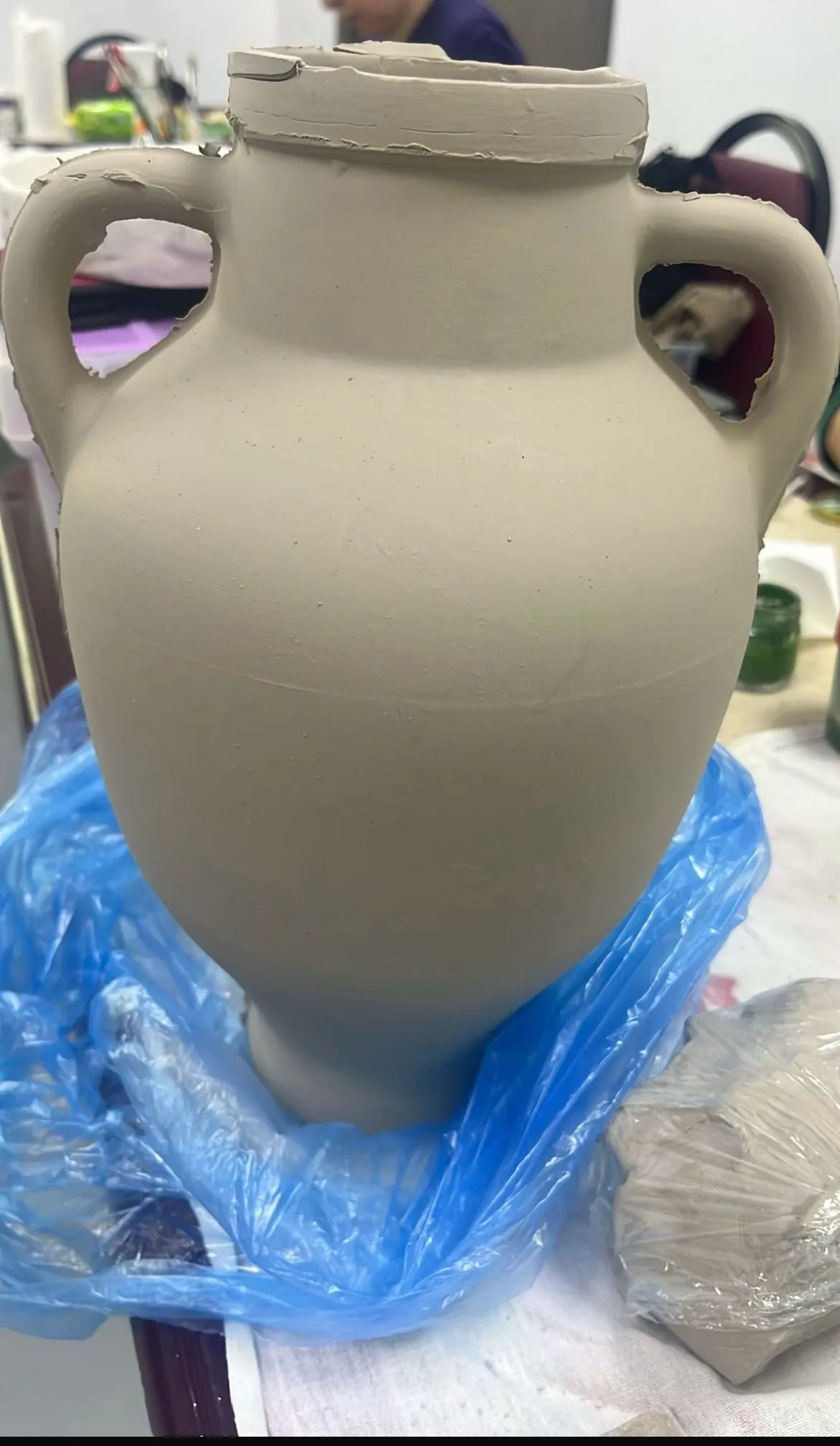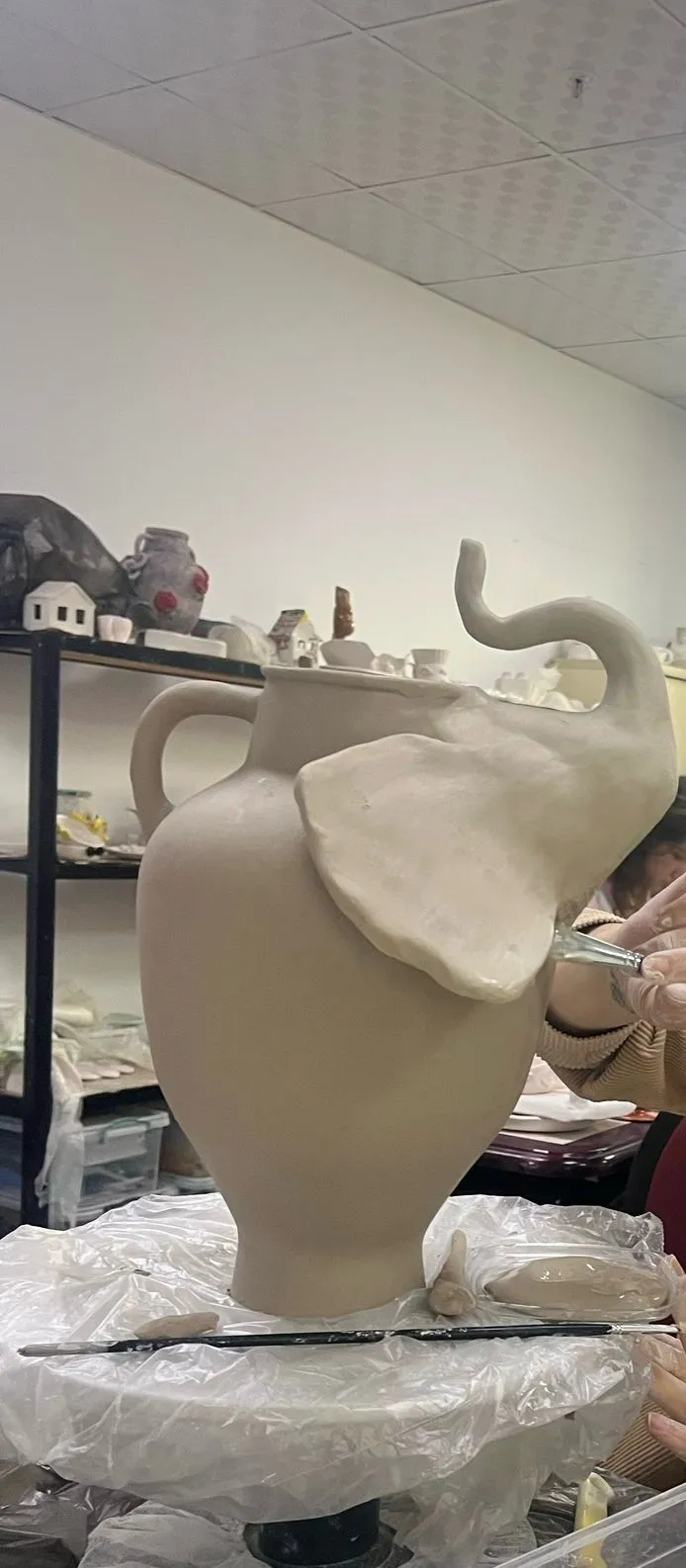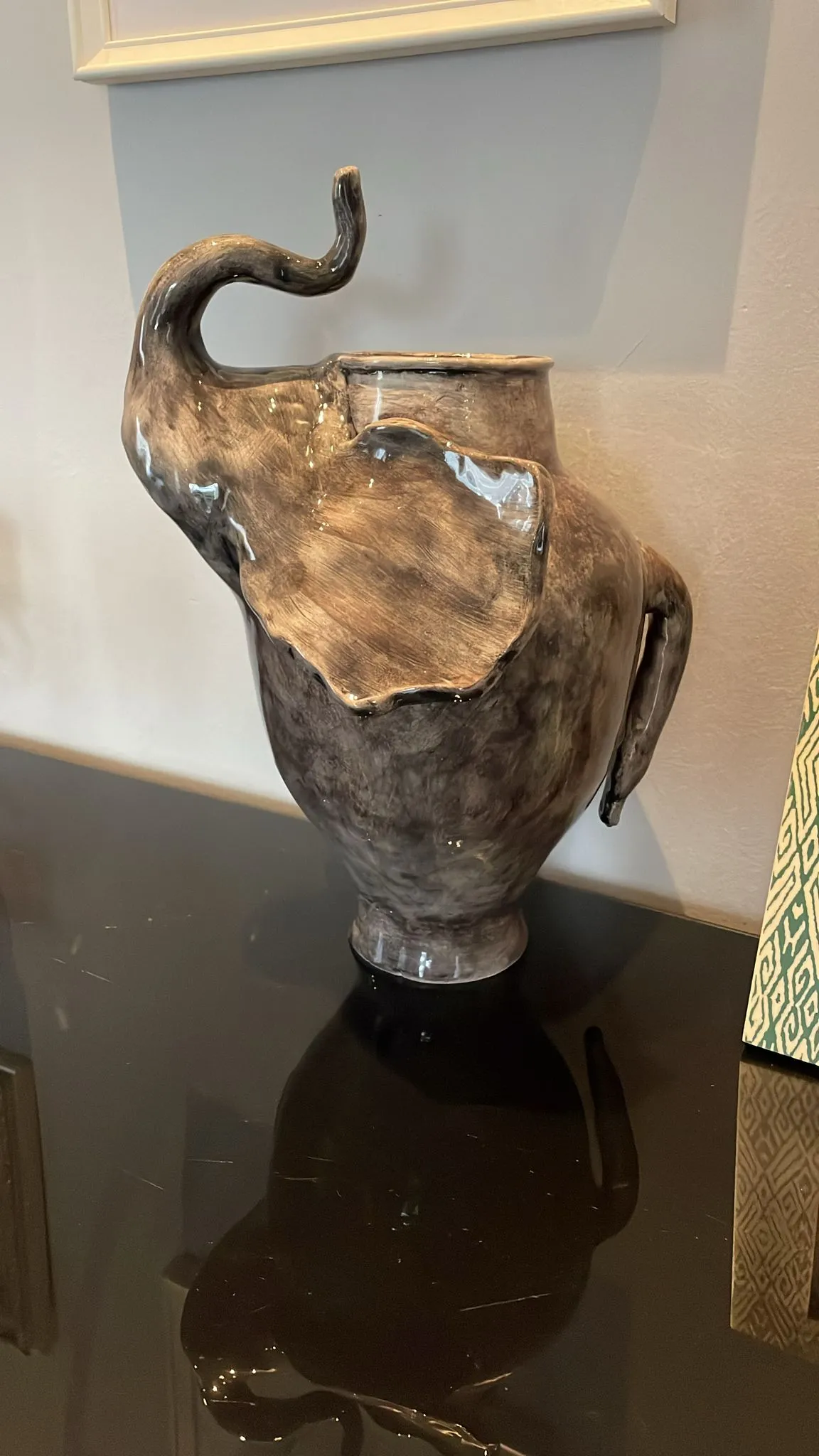Traditional beauties meet modern touches in ceramics.
The ceramic courses offered at Çayırova Public Education Center are generally referred to as "Ceramic Shaping" or "Casting and Glazing" courses. These courses are organized to help participants acquire basic knowledge of ceramics and pottery arts. The descriptions of public education courses typically include the following elements:
- Course Objective: The aim is to teach the fundamental techniques of ceramic and pottery arts, develop creative skills, familiarize participants with both traditional and modern production methods, and help them gain competence in this field, either professionally or as amateurs.
- Course Content: Ceramic courses offered in public education centers typically include the following topics:
- Basics of Ceramics: Knowledge of ceramic materials, various clay types, firing techniques, and usage.
- Pottery Making: Traditional pottery techniques, pattern creation, painting, and firing methods.
- Shaping Techniques: Handbuilding, wheel throwing, and other production techniques.
- Decoration and Painting Techniques: Various decoration methods, glazing techniques, and color theory.
- Firing: Firing ceramics, both low and high-temperature firing methods.
- Course Duration and Levels: Ceramic courses are usually held over a certain period, with several days per week. Courses can be offered at different levels—beginner, intermediate, and advanced—based on the participants' experience. The courses contain techniques and projects suitable for each level.
- Target Audience:
- Hobbyists: Individuals interested in ceramics and pottery arts who wish to improve their skills in this area.
- Those seeking professional or business purposes: People who aim to use traditional arts in their professional lives.
- Students and young people: Individuals who want to learn this art form as an extracurricular activity.
- Skills Acquired:
- Participants learn basic ceramic making techniques and pottery methods.
- The ability to create ceramic or pottery works.
- Gaining knowledge of basic decoration, glazing, and firing techniques.
- Developing creative projects and forming a personal style.
- Importance of Ceramic Courses in Public Education:
- Enhances Artistic Development: Participants can develop their aesthetic understanding and creative thinking skills.
- Preserves Cultural Heritage: It ensures the continuity of traditional Turkish pottery and ceramic arts.
- Educational Needs for the Target Audience: Offers course content suitable for both amateur and professional levels.
- Personal Development: Ceramic making is an activity that enhances manual skills and provides mental relaxation.
Ceramic courses in Public Education Centers contribute to bringing art to the public and enriching the community's aesthetic understanding. These courses combine both traditional and modern artistic approaches, providing participants with new skills. Ceramic art has a history as old as human civilization and holds significant importance both functionally and aesthetically. Ceramic is a material made by shaping and firing clay, and this process has evolved throughout history. Here is a general overview of the history of ceramic art, its place in the world and in Turkey, its importance, and its development.
The History of Ceramic Art
The origins of ceramic art date back to around 10,000-12,000 BCE. The first examples of ceramics emerged during the Neolithic period, when humans transitioned to settled life. Initially created for functional purposes, ceramics gradually acquired an aesthetic dimension and evolved into an art form.
The earliest ceramics were likely produced in regions where early civilizations, such as China, Mesopotamia, Egypt, and Anatolia, were located. These early ceramics were typically handmade, and the firing techniques were limited. Over time, ceramic technologies advanced, and different firing methods and decoration techniques began to be used.
The Place of Ceramic Art in the World
Ceramic art has gained significant importance in various cultures and historical periods.
- Chinese Ceramics: China is one of the oldest and most influential centers of ceramic art. Especially during the Tang and Song Dynasties, Chinese ceramics reached a peak. Porcelain production in China greatly influenced global ceramic production.
- Mesopotamia and Egypt: Pottery produced in Mesopotamia and portable pottery from Egypt are key examples of early ceramics. In Mesopotamia, ceramics were mainly used for everyday life, while in Egypt, aesthetically valuable works were produced for use as grave goods.
- Greek and Roman Periods: Greek ceramics are especially famous for their black-figure and red-figure vase styles. During this period, ceramics served both functional and artistic purposes. In Roman times, ceramics were widely used in daily life as well as for decorative purposes.
- Medieval and Renaissance Periods: During the Middle Ages, ceramics were primarily functional, but in the Renaissance, particularly in Italy, ceramics gained significant aesthetic value, and more refined and artistic objects were produced.
- Modern Era: By the late 19th century, with the Industrial Revolution, ceramic production began to shift to mass production in factory settings. However, during this period, ceramic artists also gained a significant space for showcasing their individual creativity through art ceramics.
The Place of Ceramic Art in Turkey
Turkey holds an important place in the historical development of ceramic art. The history of Anatolia carries the traces of many different civilizations, and these civilizations developed their own ceramic traditions.
- Hittites and Phrygians: Ceramics were produced during the Hittite and Phrygian periods in Anatolia. Hittite ceramics were often decorated with geometric patterns, while Phrygian ceramics featured rich decorations.
- Seljuk and Ottoman Periods: During the Seljuk period, ceramics and tiles produced in Konya were commonly used in mosque and madrassa decorations. In the Ottoman period, İznik ceramics became world-renowned. İznik tiles are known for their blue-and-white colors and intricate patterns.
- Republic Period and Modern Turkish Ceramics: In the 20th century, a new era began in Turkish ceramics, where artists moved towards modernism and contemporary design. During this period, Turkish ceramic artists combined traditional ceramic techniques with modern interpretations, achieving success worldwide. Additionally, ceramic art became more widespread in Turkey as it was incorporated into the curricula of art schools.
The Importance of Ceramic Art for Us
Ceramic art is of great importance both as a cultural heritage and in contemporary art. In Turkey and around the world, ceramics are important works that represent both the past and the present. Ceramics are not just aesthetic objects, but also traces that reflect a society’s history, culture, and way of life.
The development of ceramic art in Turkey has been enriched by the combination of preserving traditional handicrafts and incorporating innovative modern designs. Turkish ceramics continue to produce valuable artistic works in both traditional and modern forms.
In Conclusion
Ceramic art has held an important place in every period of human history and has evolved to the present day. Ceramics, which have both functional and artistic aspects, are a part of our cultural identity and aesthetic understanding. Both in the world and in Turkey, ceramic art continues to develop and attracts increasing interest, with more and more people learning and practicing this art form. This art provides us with a reminder of the past while also offering a creative mode of expression for the future.









